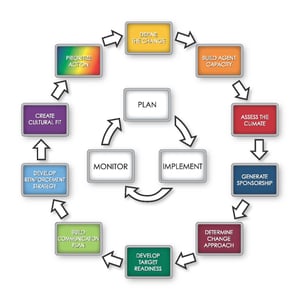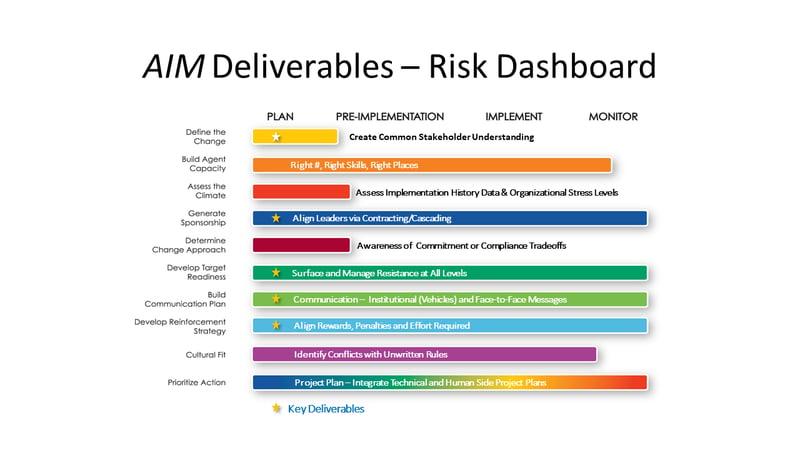When I discuss the blending of project management and change management during IMA’s AIM Change Management Training sessions, inevitably someone always asks, “but aren’t they the same thing?” While in a perfect world we would see project management and change management as one blended protocol, there are several fundamental differences between the two disciplines. Individually, each plays a critically important role in the success of a project, but when blended from the beginning, they will help to ensure ROI is achieved. A much more valuable metric in my (not so) humble opinion.
several fundamental differences between the two disciplines. Individually, each plays a critically important role in the success of a project, but when blended from the beginning, they will help to ensure ROI is achieved. A much more valuable metric in my (not so) humble opinion.
5 Metrics of Success
In order to understand the key differences between project management and change management you must first understand Installation vs. Implementation.
There are 5 metrics that must be met on every project in order to deem it successful:
- It’s on time
- It’s on budget
- It meets the technical objectives
These are the metrics being managed by project management. Once they are achieved, the project has been successfully installed. But just being on time, on budget and to scope is not enough to declare a project successful. There are two additional measures that must also be met to ensure full implementation or value realization is reached:
- The business objectives must be achieved
- AND human objectives must be met
Change management is defined as the rigor and discipline around the people side of the change. The human objectives are what people will be doing differently as a result of the change. In other words, if you walk into the organization what will people be DOING differently than today? The truth of the matter is, there is no change unless people change their behavior. And until you get to sustained behavior change, you will not get to Return on Investment.
The Human Equation
It goes without saying then, that in order to increase the likelihood of success, organizations need to apply the  same discipline and rigor on the people side (change management) of a project as they do the technical side (project management). In other words, they need to integrate a structured change management framework like the AIM Change Management Methodology into their project management protocols.
same discipline and rigor on the people side (change management) of a project as they do the technical side (project management). In other words, they need to integrate a structured change management framework like the AIM Change Management Methodology into their project management protocols.
AIM was developed with this concept in mind. When you look at the 10 core change management principles depicted in AIM’s road map, you will see they surround the project management elements of Plan, Implement and Monitor. In AIM, the human elements of a project are meant to be blended with the project management approach from the very beginning.
The below chart describes AIM’s 10 core elements and how they fit into Project Management:
 5 Steps to Integration
5 Steps to Integration
Too many organizations make the mistake of waiting until they get to “go live” or installation and then bolting on change management as a late add-on. Or they assign the project team the technical objectives and a separate team, such as HR, the change management side. Running the two plans in parallel is not going to work either, because in the real world, changes on the technical side should inform what is needed on the change management side, and vice versa.
Here are 5 best practices organizations can embrace to integrate project management and change management from the start of a project:
- Have a common change management framework (yes, like AIM) that is universally shared across the business units affected by the change.
- Clearly define the human objectives early in the project lifecycle
- Avoid dis-assembling the project and program infrastructure prematurely. This means resources should be budgeted for the goal of Return on Investment, not just “go-live”
- Employ an “Implementation Plan” that at a minimum includes the following components.
- Defining the Change
- A Sponsorship Strategy
- A Readiness Strategy
- A Communication Plan
- A Reinforcement Strategy - Adjust the definition of “project success” so that a project isn’t deemed to be fully complete unless and until it gets to full system optimization
Organizations looking to increase optimization for business change projects should look at the integration of AIM into their project management protocols. When the technical side (project management) and the human side (change management) of an initiative are managed concurrently, the chances of full valuation are at their absolute highest. And in today’s business world, who can afford not to be successful?


